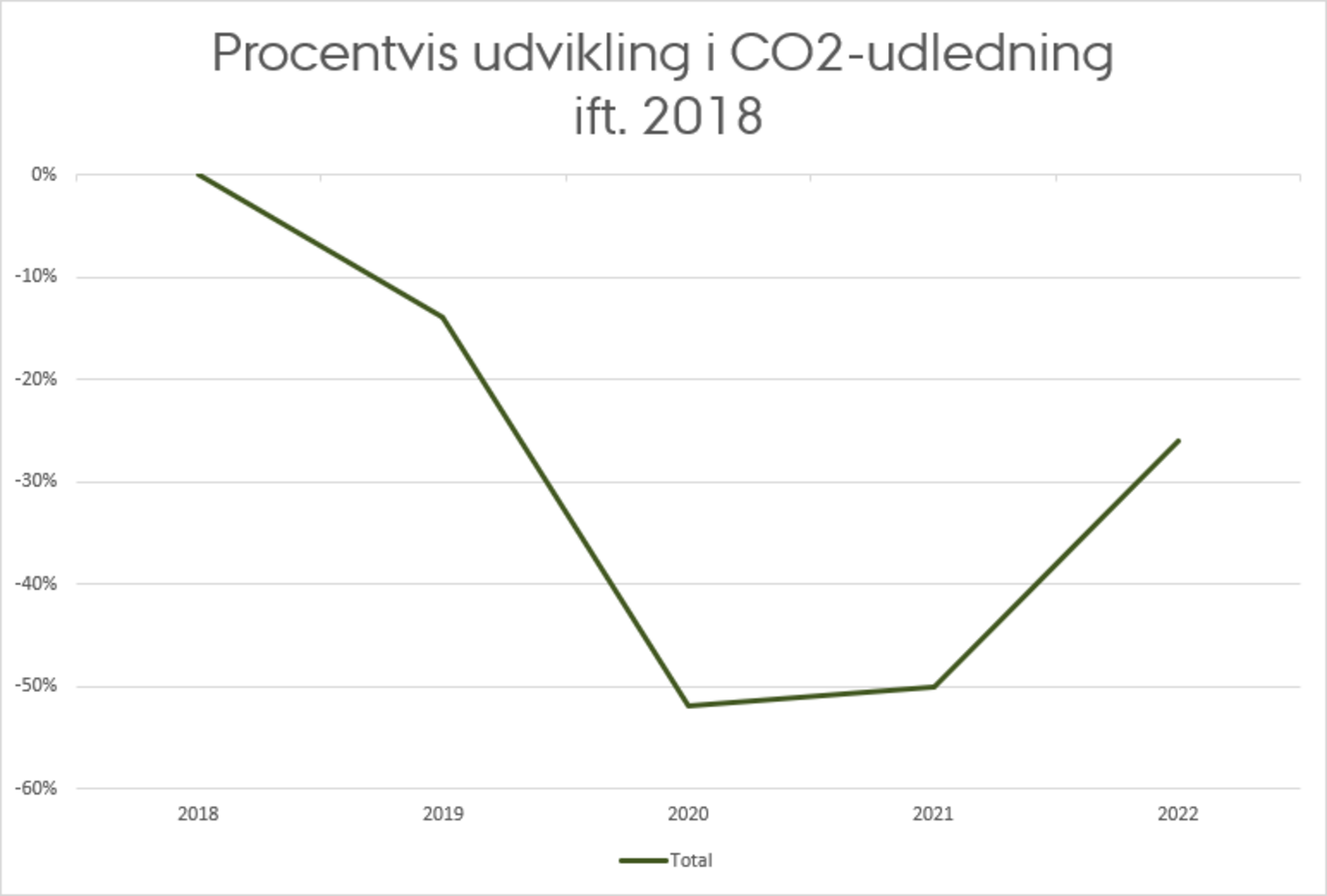Greenhouse Gas Emissions Report 2022: AU is on the right track, but continued focus on carbon emissions is crucial
AU's emits less CO2emissions now than before Covid-19, but we need to maintain a sharp focus on reduction – particularly in relation to air travel. This is the main message of AU’s 2022 GHG emissions report.

Aarhus University is still making good progress on reducing its CO2emissions. In relation to a 2018 baseline, the university’s total emissions in 2022 fell by 25%. However, emissions rose over 2021, which was marked by Covid-19 restrictions and shutdowns. The increase in emissions over 2021 was primarily due to an increase in air travel.
According to University Director Kristian Thorn, the overall trend since 2018 has been satisfactory, but we still need to think twice about our travel activities, he said:
“Post Covid-19, our travel activity is still at a lower level than before the pandemic. Nonetheless, the development from 2021 to 2022 points to a significant increase in air travel in particular. We are an international university, and close contact with the rest of the world is absolutely decisive for our activities. At the same time, we have an obligation to take the climate into consideration, and we need to maintain a strong focus on reducing non-essential travel – for example the number of flights and how many participants AU sends to events abroad.”
Even though there were significant reductions in the consumption of heat and electricity at AU in 2022, this does not add up to 1:1 reductions in the university’s CO2 emissions, as the GHG accounts are calculated based on the utility company's consumption of heat sources. However, AU’s success in reducing consumption and changing staff and student habits still represents an important step in the university’s green transition:
“AU succeeded in cutting back on heating, and we reduced our electricity consumption significantly in the second half of 2022,” Thorn said. “The will and interest in contributing to AU’s green transition many have demonstrated deserves a lot of recognition. Now it’s a matter of maintaining those good habits – particularly in relation to our electricity consumption.”
Find out more about AU’s climate initiatives, which are helping the university reach its target of a total reduction in carbon emissions of of 35% in 2025.
About AU’s GHG emissions report
- Aarhus University's annual GHG emissions report is based on the Greenhouse Gas Protocol (GHG Protocol), which is a recognised method of calculating emissions of greenhouse gases by converting them into CO2 equivalents divided into three scopes.
- The Danish Centre for Environment and Energy (DCE) was behind the 2022 GHG emissions report for Aarhus University.
- As in 2021, the climate accounts for the year are based on two different methods: The activity-based method, whereby an activity (e.g. consumed power or air travel) is assigned an emission factor, and the financial reporting data-based method, whereby the number of kroner spent in a category is assigned an emission factor (e.g. amount for purchased IT hardware or chemicals).
Read more about the methodology and read the report in its entirety on the website.